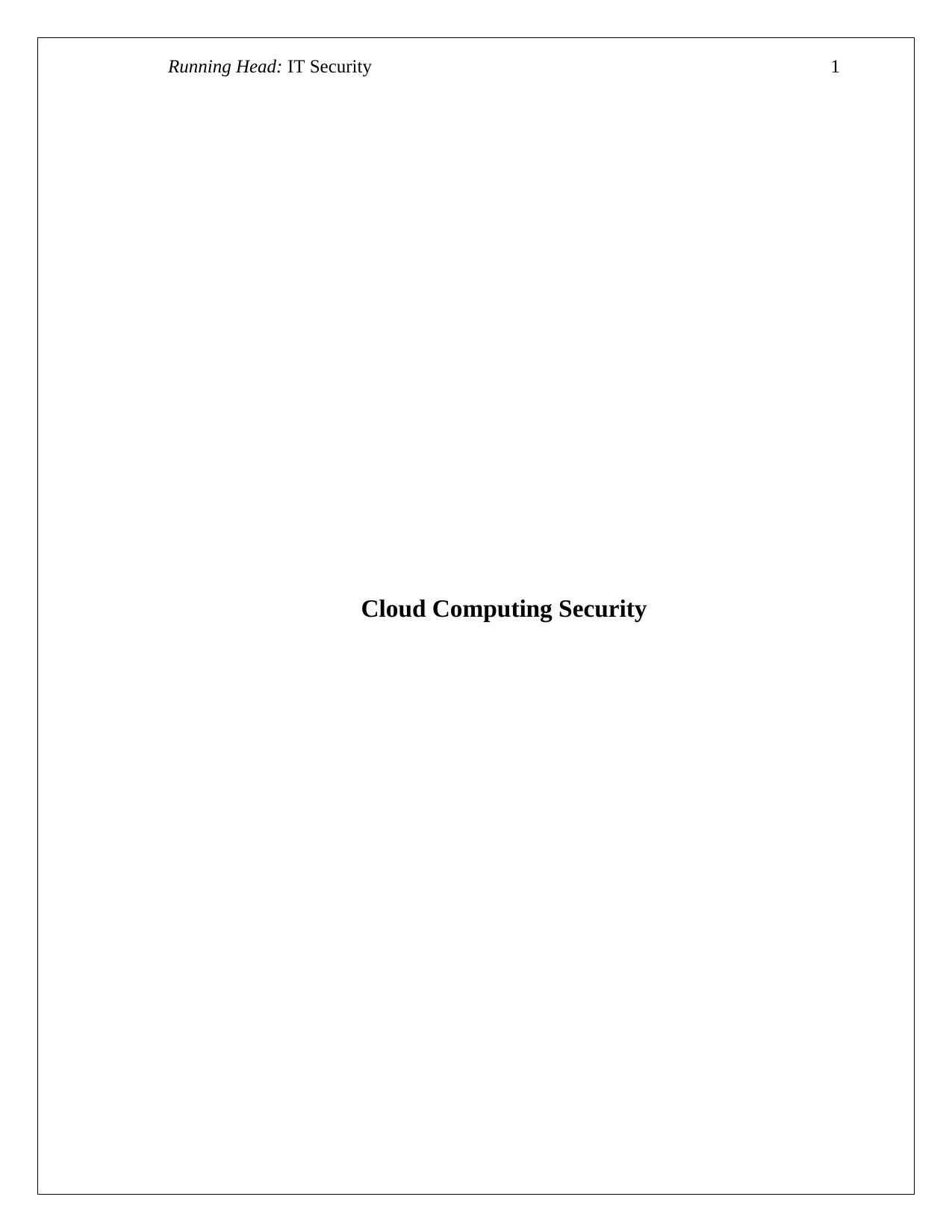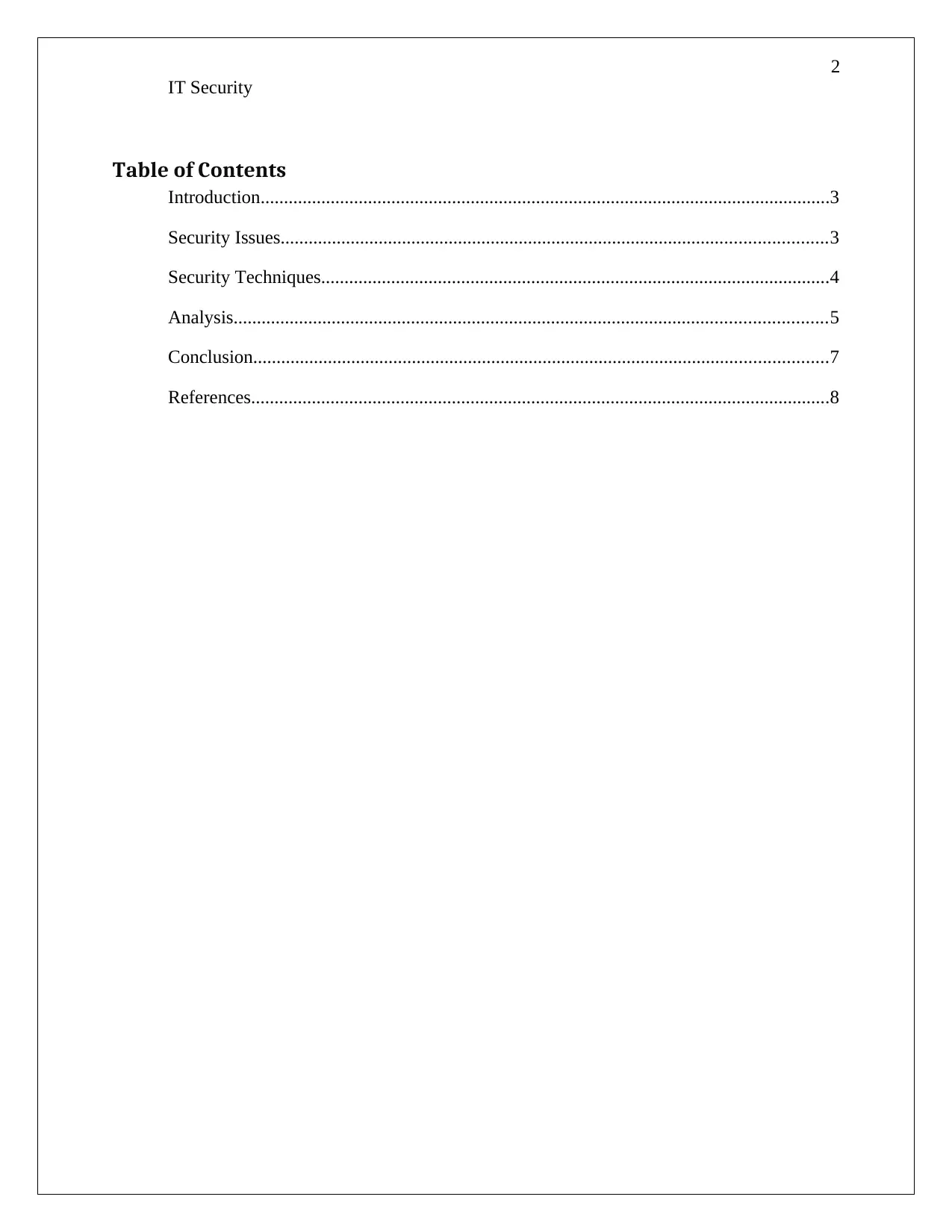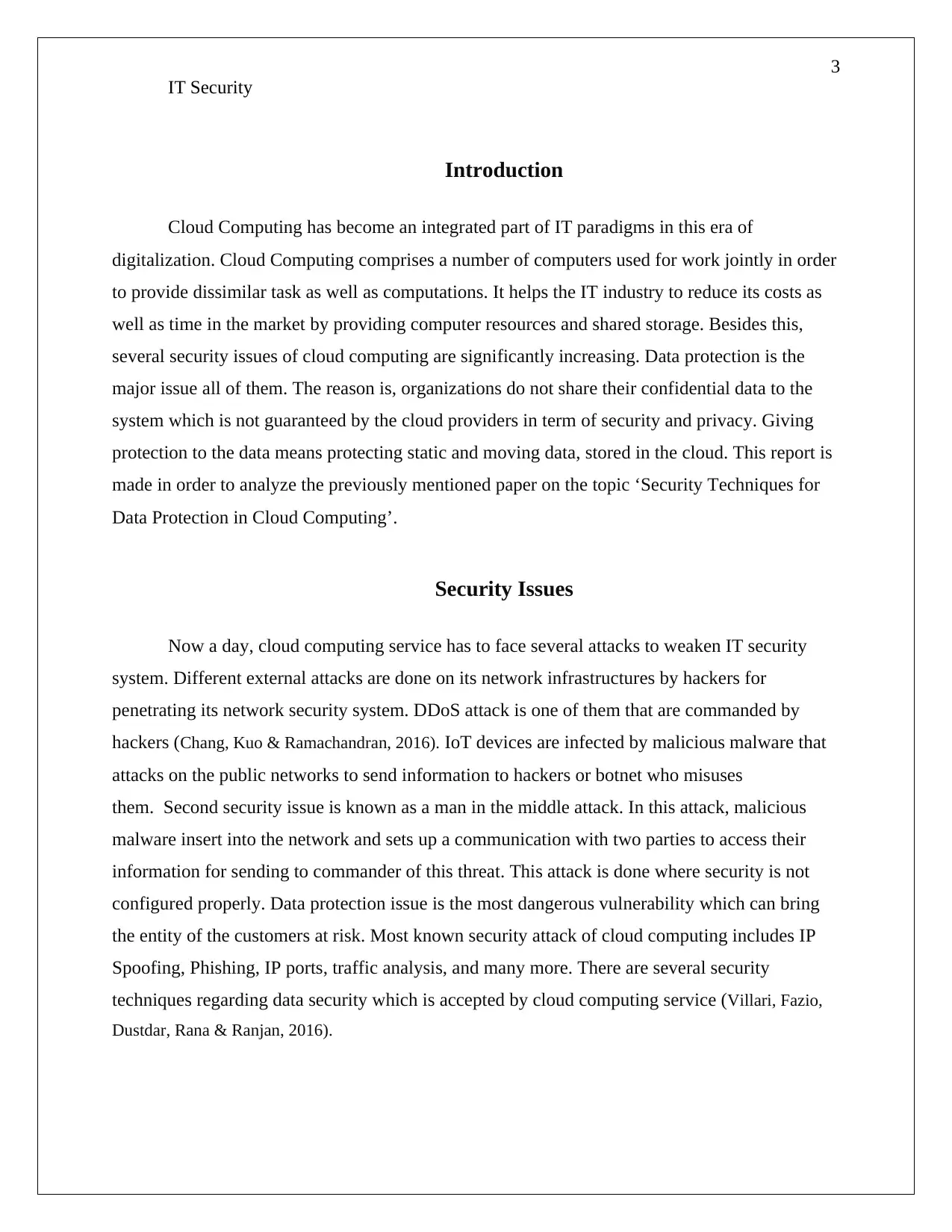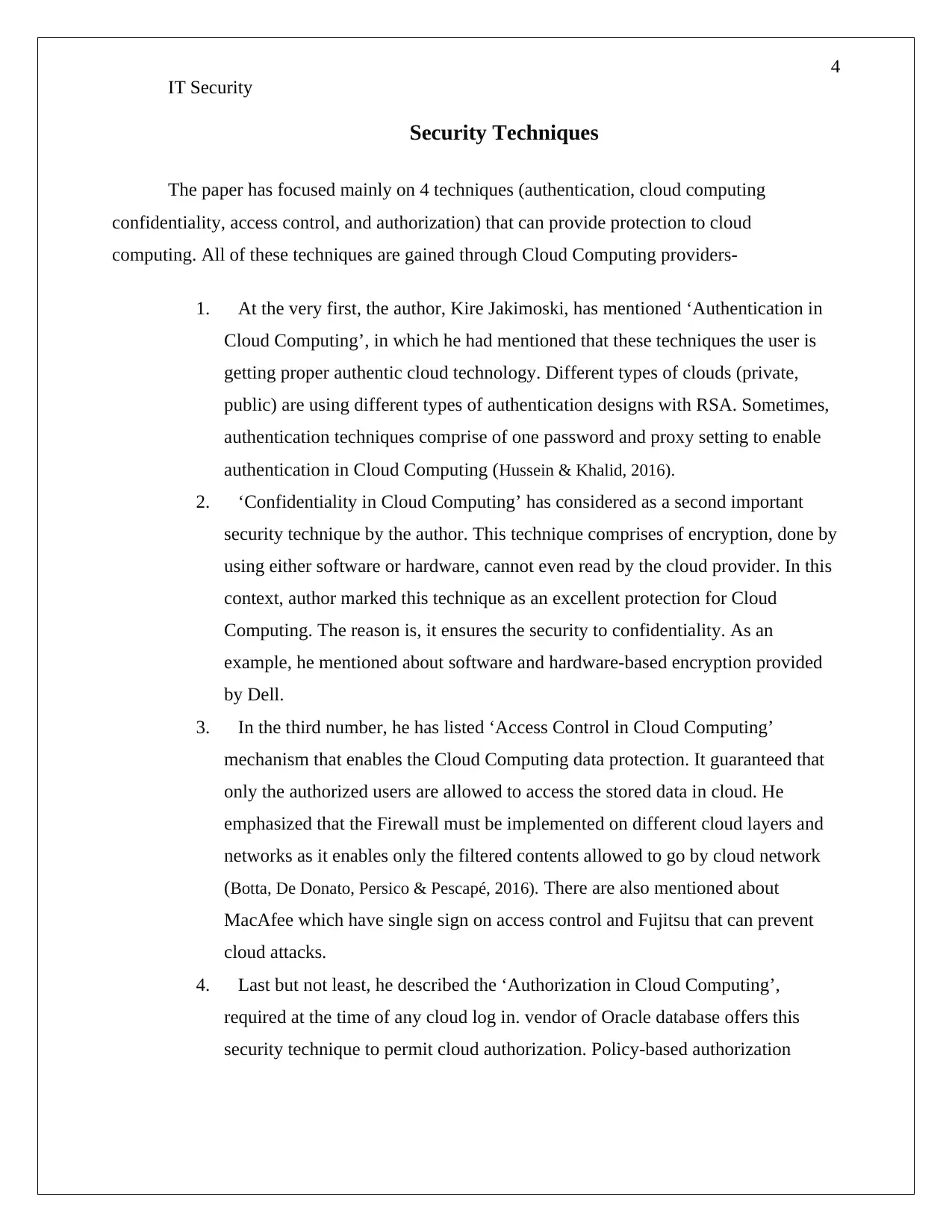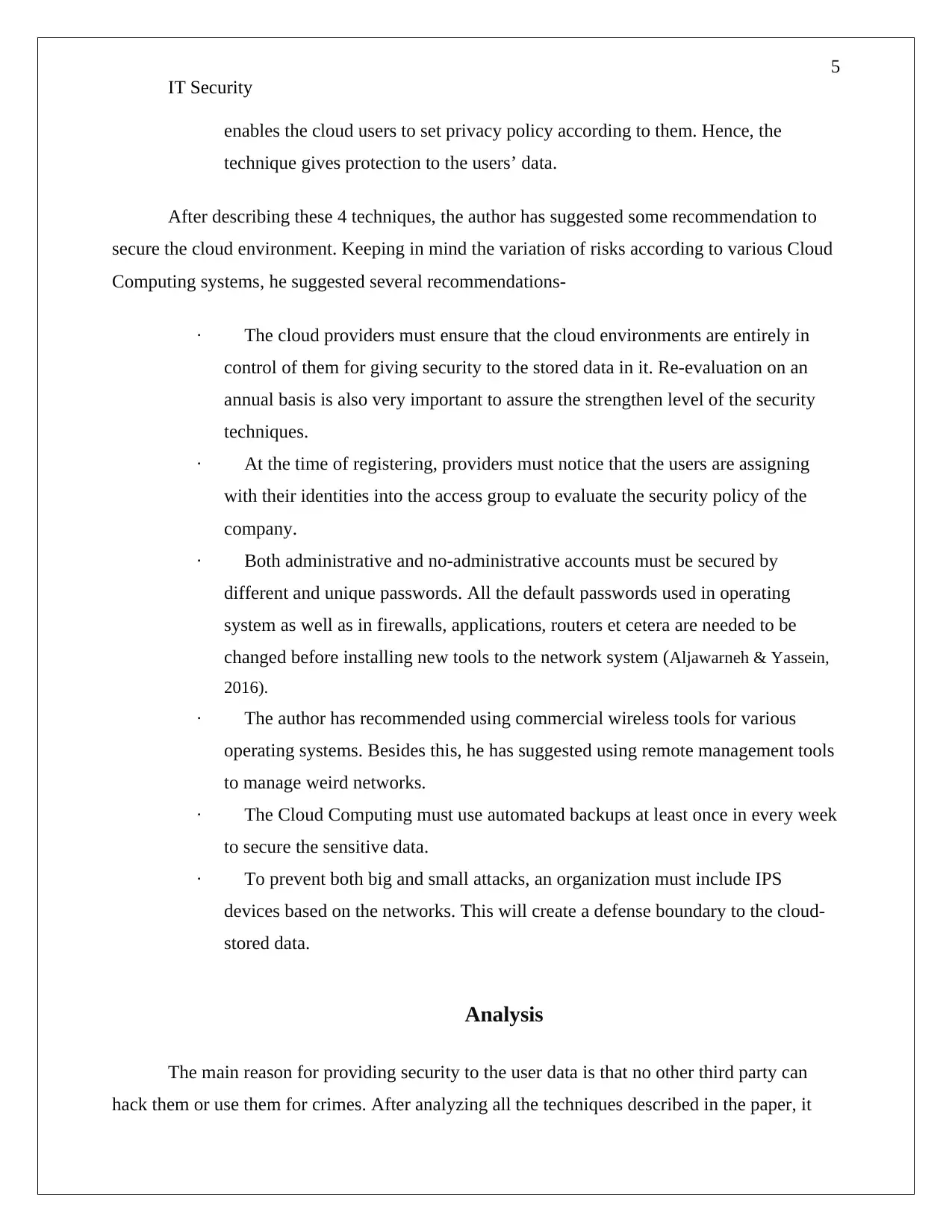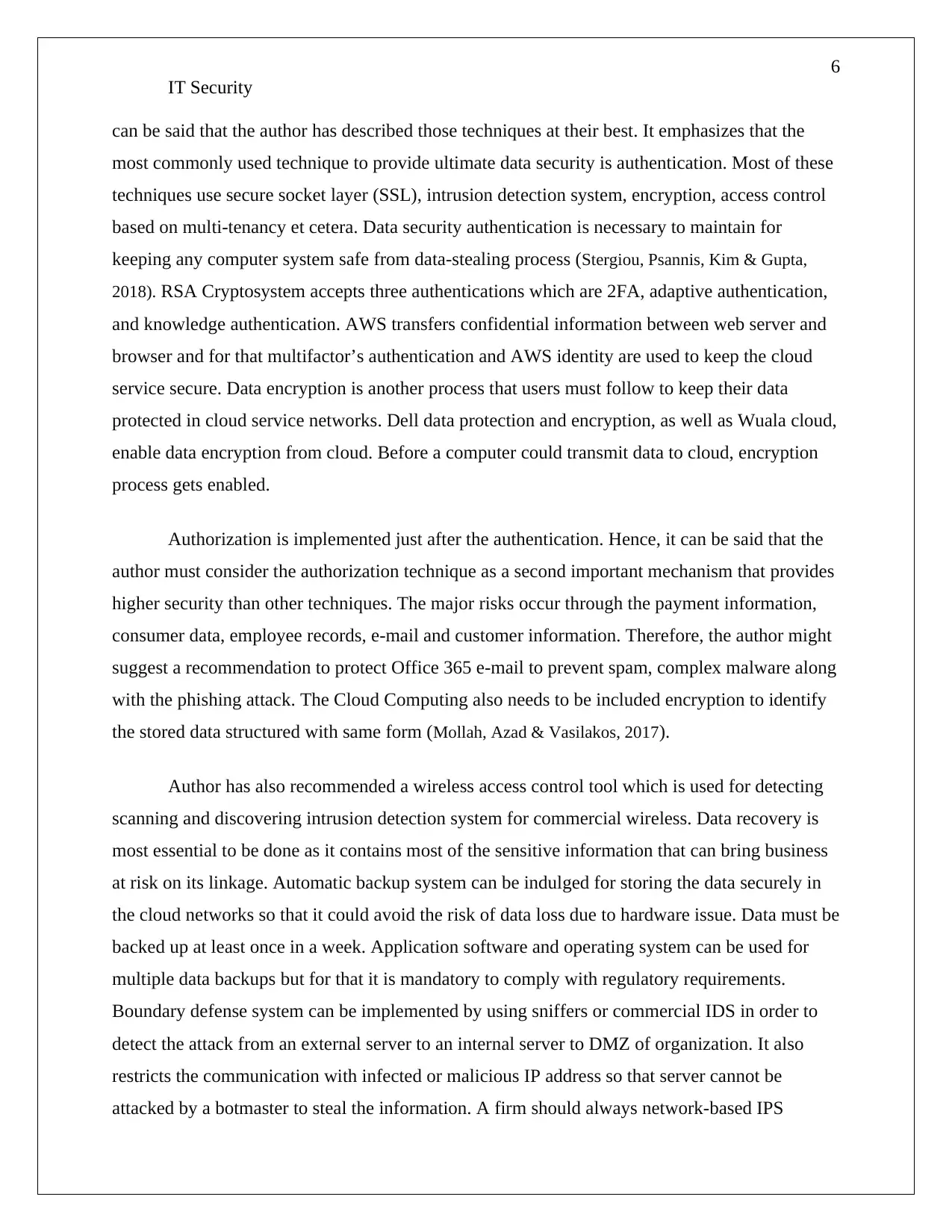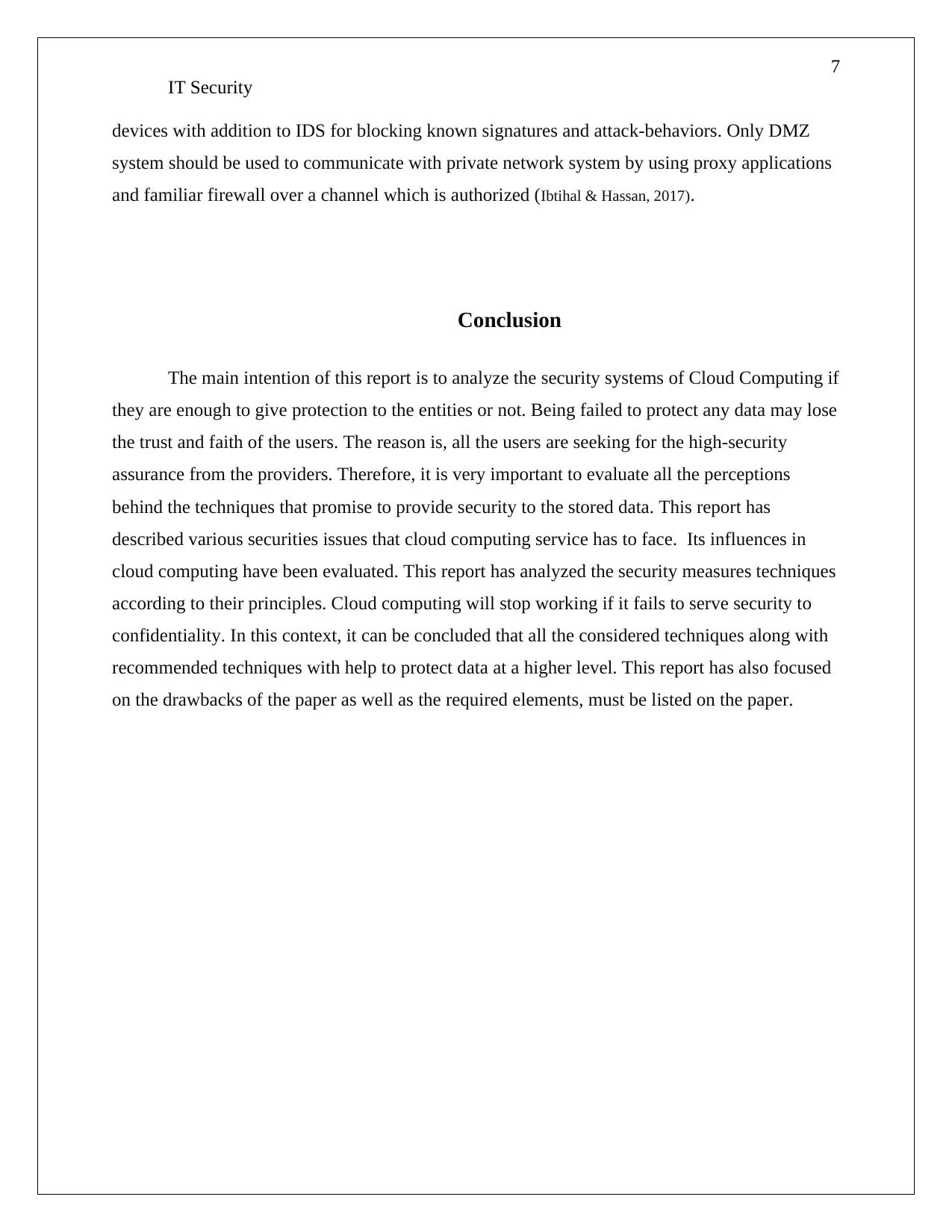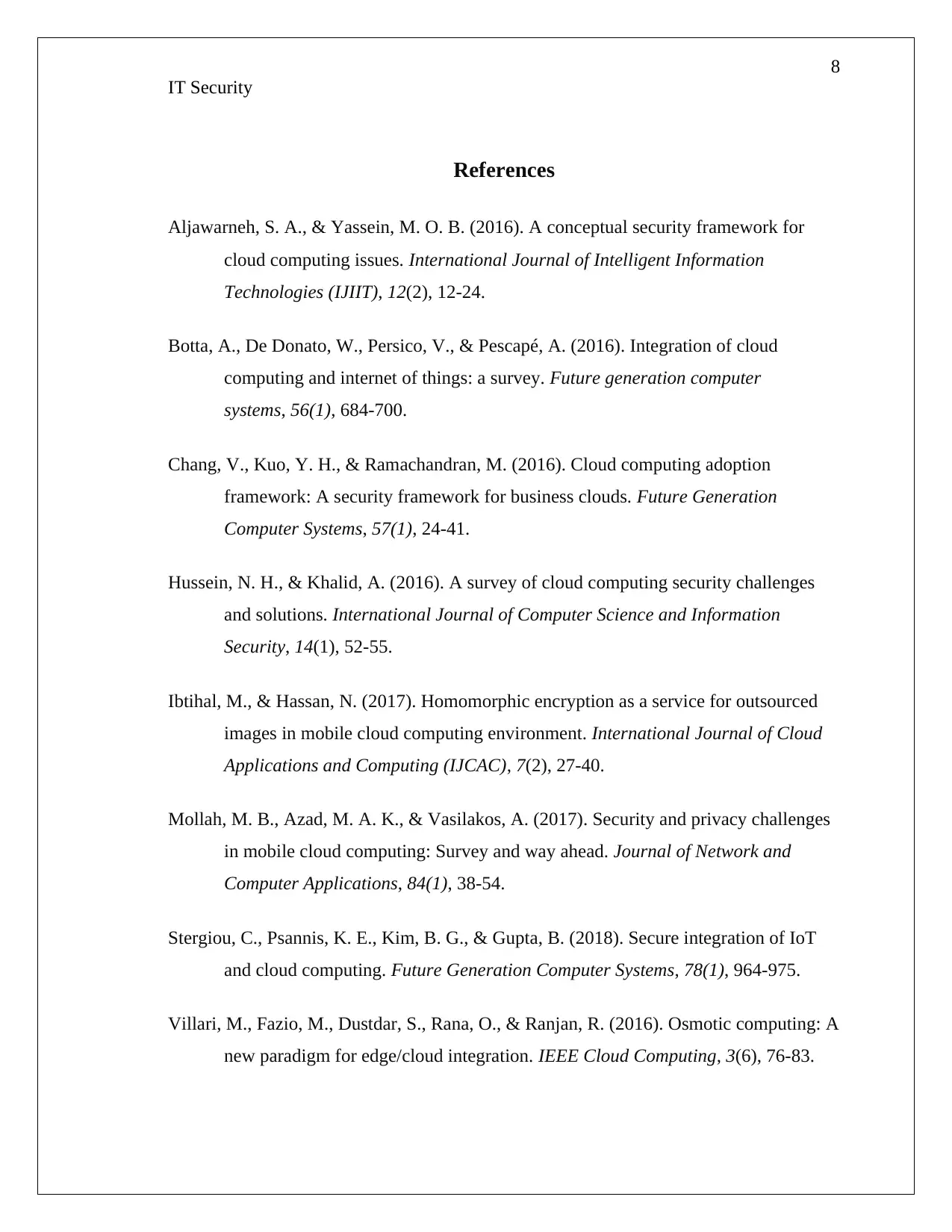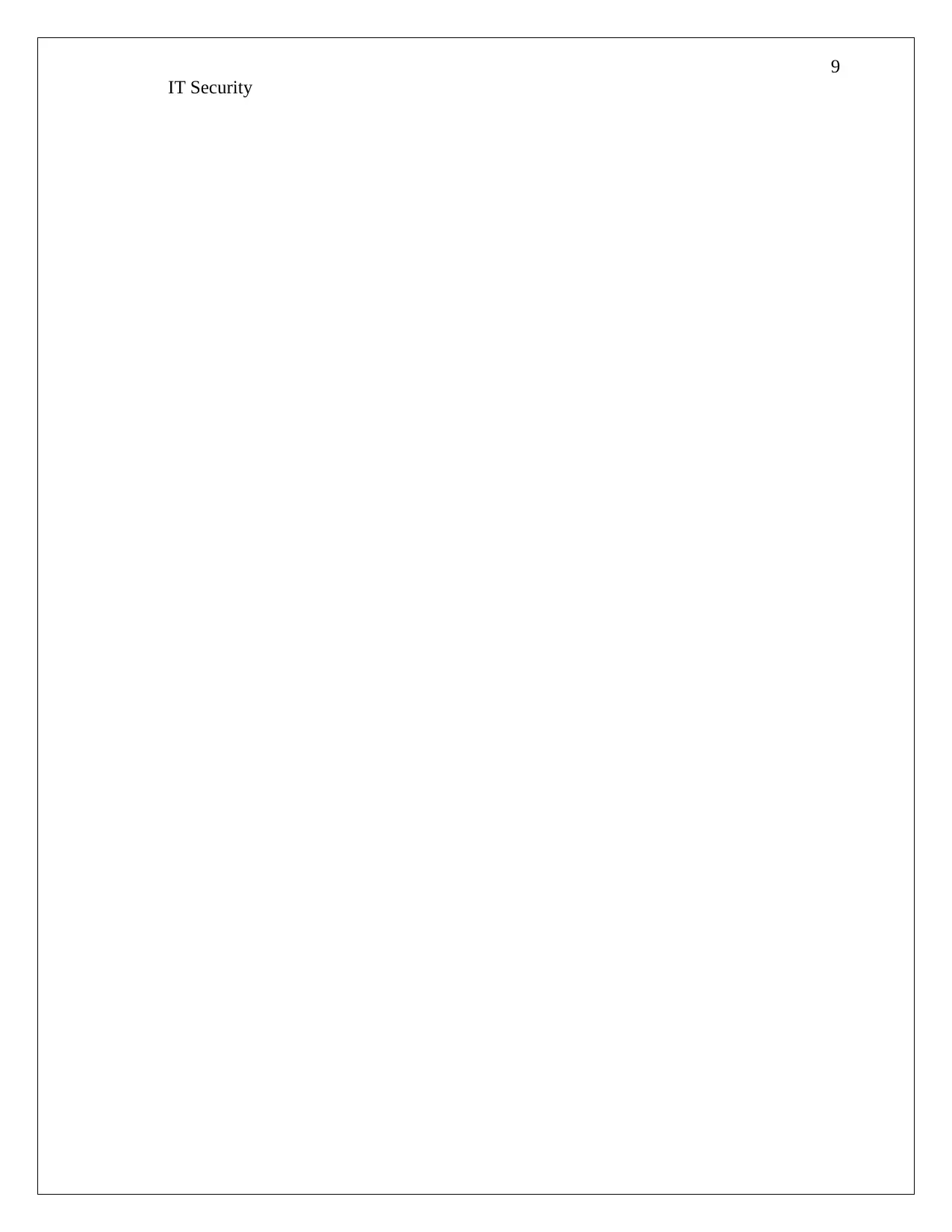This report analyzes the security measures and techniques used in cloud computing to protect user data from unauthorized access or theft. The author emphasizes the importance of re-evaluation on an annual basis to ensure the strengthen level of the security techniques. The main reason for providing security is to prevent hacking or using sensitive data for criminal activities. The report highlights various security issues that cloud computing service has to face, such as authentication, encryption, and authorization. It also recommends using commercial wireless tools, remote management tools, and automated backups to secure data. Furthermore, the report suggests implementing IPS devices based on networks to create a defense boundary to cloud-stored data.
![[object Object]](/_next/static/media/star-bottom.7253800d.svg)
![[object Object]](/_next/static/media/star-bottom.7253800d.svg)
